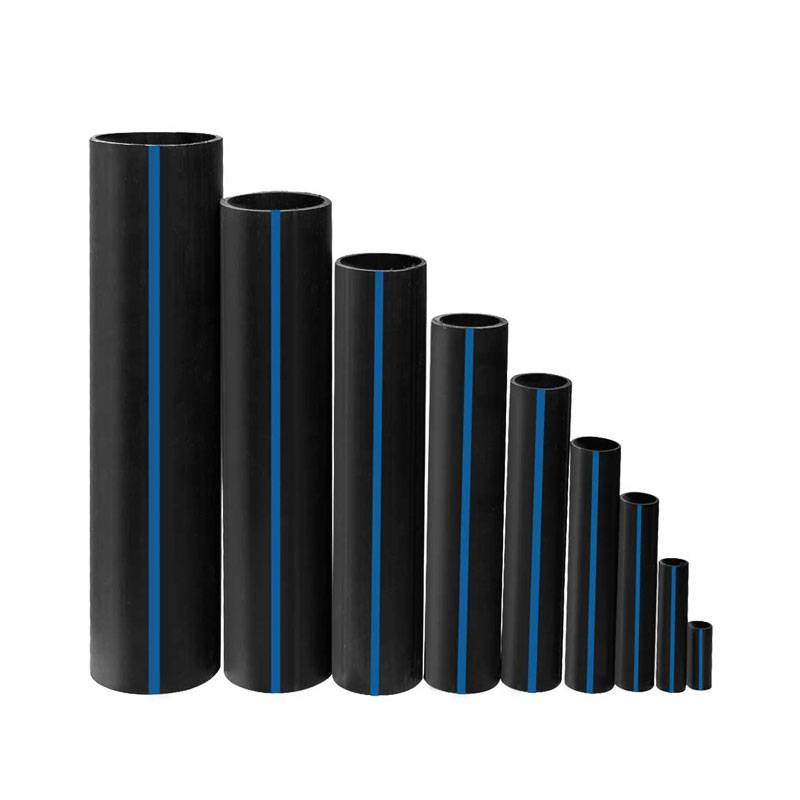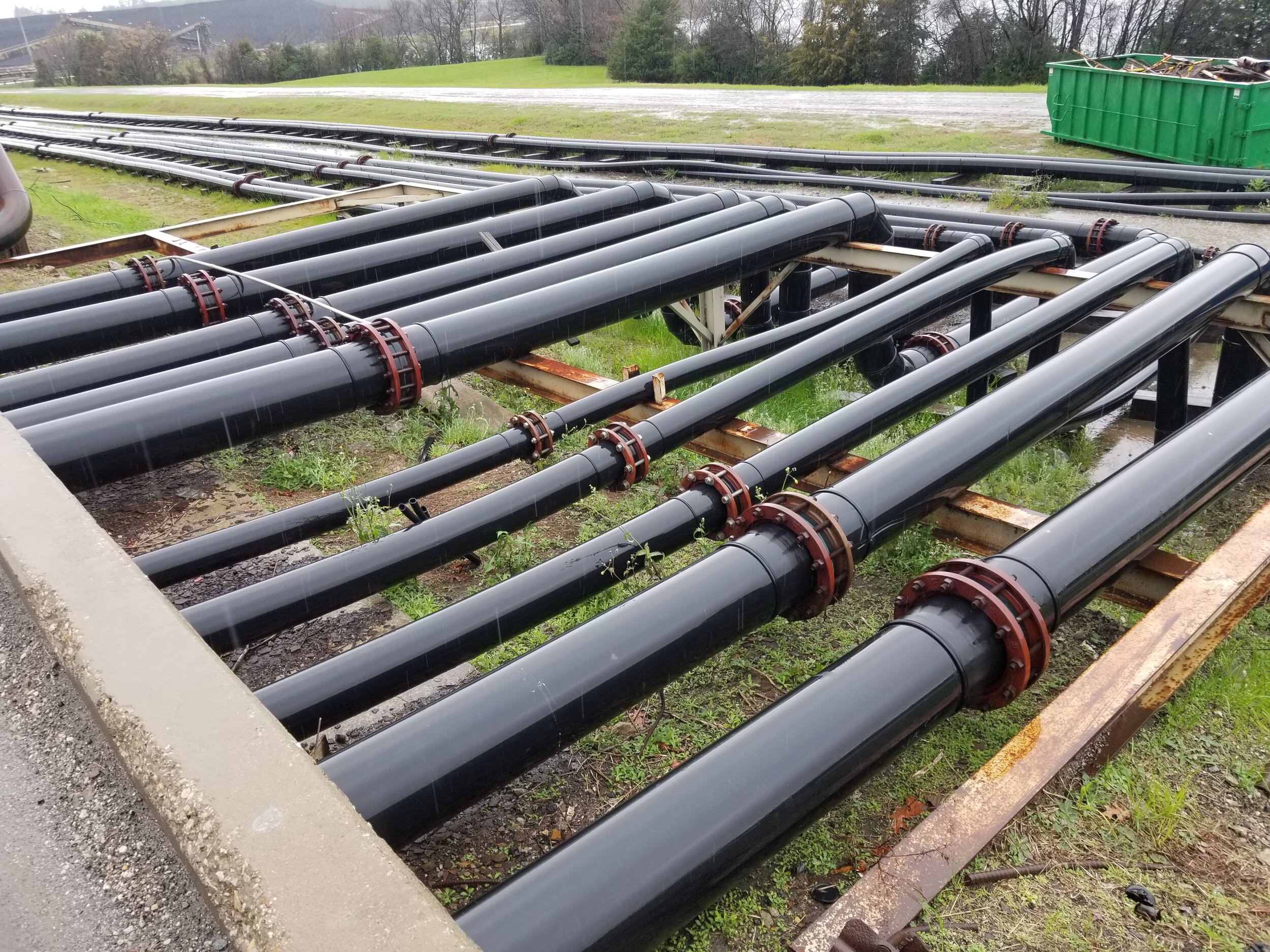The Advancement of American Plastics HDPE Pipe Manufacturing: What You Need to Know
The Necessary Actions for Successful Installation of HDPE Pipe in Your Following Task
Effective setup of HDPE pipe requires mindful preparation and execution. Trick actions include evaluating project needs, preparing the website, and choosing proper signing up with strategies. Each phase plays an important function in guaranteeing the stability and performance of the pipe. Recognizing these necessary actions can significantly affect the general success of the project - hdpe pipe fittings Midland TX. The subtleties of each step might hold the key to getting rid of typical obstacles faced throughout setup.
Recognizing the Perks of HDPE Pipe
High-density polyethylene (HDPE) pipeline provides countless advantages that make it a recommended choice for different applications. Its high resistance to corrosion and chemicals assurances resilience in requiring environments, considerably extending the life expectancy of installations. Furthermore, HDPE's adaptability permits less complicated installation, particularly in tough surfaces, as it can bend without damaging. The lightweight nature of HDPE pipe streamlines transportation and handling, reducing labor expenses during installment.
HDPE pipeline is recognized for its reduced rubbing coefficient, which enhances fluid circulation and minimizes power consumption. Its seamless construction decreases the danger of leaks, adding to much better source monitoring and environmental management. Additionally, HDPE is recyclable, aligning with sustainable practices and decreasing environmental effect. Generally, the mix of toughness, adaptability, and eco-friendliness makes HDPE pipeline a superior choice for a vast array of jobs, from water circulation to industrial applications.
Preparation Your HDPE Pipe Setup
When preparing a setup of HDPE pipeline, mindful consideration of a number of essential factors is vital to safeguard an effective task. Job supervisors need to evaluate the specific needs of the pipeline, consisting of the meant usage, flow prices, and environmental conditions. Recognizing these specifications will certainly direct the selection of ideal pipe dimensions and product grade.
Next off, timelines should be developed, factoring in purchase schedules and any type of possible delays. Control with local authorities for licenses and regulatory compliance is additionally essential. In addition, a comprehensive spending plan ought to be prepared, incorporating all costs connected with products, labor, and machinery.
It is important to engage a certified group experienced in HDPE pipeline installation. Their expertise will assist alleviate threats, guarantee adherence to market criteria, and eventually contribute to the job's success. Thorough planning prepares for a smooth setup process and resilient efficiency of the HDPE piping system.
Preparing the Website for Installment
Correct website prep work is essential for the successful installation of HDPE pipe. Prior to installation begins, the website must be thoroughly assessed to guarantee it meets all necessary requirements. This consists of evaluating the ground for existing frameworks, energies, and possible dangers that might hamper the setup process.

Correct elevation and placement need to be developed to keep a regular slope for drain functions. Proper drainage around the installation website is additionally vital to avoid water build-up, which can cause problems down the line.
Techniques for Joining HDPE Pipings
Attaining a reliable link in between HDPE pipes is important for ensuring the integrity and long life of the setup. Different techniques exist for signing up with these pipes, each suited for different task demands. Fusion welding is just one of the most usual techniques, utilizing warmth to bond the pipeline ends with each other, creating a smooth and sturdy link. This technique can be more categorized right into socket fusion and butt combination, depending on the pipe arrangements.
Mechanical fittings are another alternative, using clamps and threaded ports to join areas of HDPE pipe. While generally faster to mount, they might require added upkeep gradually. Electrofusion is a customized technique that involves making use of electric existing to warm and fuse the pipelines with specially made fittings, ensuring a solid bond. Selecting the appropriate signing up with technique is essential, as it directly impacts the total performance and reliability of the HDPE piping system in the desired application.
Evaluating and Examination of Installed Pipeline
The testing and assessment of mounted HDPE pipelines are critical to ensuring their performance and durability. This process includes aesthetic assessment strategies, stress screening approaches, and leakage discovery treatments to identify potential issues. By using these approaches, professionals can confirm the integrity of the installation prior to it is placed right into usage.
Aesthetic Examination Techniques
Using reliable aesthetic evaluation methods is important for guaranteeing the integrity of installed HDPE pipes. Inspectors must methodically analyze all noticeable sections of the pipe to determine any kind of indicators of damages, imbalance, or inappropriate installment. Trick signs to evaluate consist of joint stability, surface irregularities, and links. Examiners may make use of tools such as magnifying glasses or cameras to enhance presence and detail. It is necessary to inspect for signs of ecological tension, such as buckling or too much bending, which can jeopardize performance. Regular paperwork of findings permits for tracking modifications over time and helps overview required repairs. By adhering to established aesthetic examination methods, job groups can significantly lower the threat of future failings and assure lasting integrity of the piping system.
Pressure Evaluating Approaches
Aesthetic examination functions as an initial measure, yet it is not adequate by itself to ensure the efficiency of mounted HDPE pipes. Pressure testing approaches are important for guaranteeing the stability of these systems. Typically, hydrostatic testing is utilized, where the pipelines are full of water and based on stress degrees above the desired operating pressure. This technique assists identify weaknesses or prospective leaks. Pneumatically-driven screening can also be used, although it brings higher threats as a result of the compressibility of air. Despite the method chosen, adhering to market requirements and security methods is vital. After carrying out pressure tests, comprehensive documentation is necessary to verify the outcomes and confirm that the setup satisfies all operational requirements before proceeding to the next stage of the task.

Drip Detection Procedures
How can one ensure that installed HDPE pipes are free from leakages? Efficient leak discovery procedures are important to secure the integrity of the system. Originally, visual evaluations ought to be executed, trying to find indications of water buildup or dirt erosion around pipeline joints. Following this, stress screening can verify the system's toughness. A typical approach is the hydrostatic test, where water is presented under pressure, monitoring for decreases that indicate prospective leakages. Additionally, progressed technologies, such as acoustic sensing units or infrared thermography, can spot leakages that may not be noticeable. Normal monitoring and upkeep more contribute to the long life of HDPE pipes, ensuring they continue to be leak-free throughout their operational life-span. Proper documents of these procedures is essential for conformity and future recommendation.
Upkeep Tips for Long-Term Efficiency
To assure the longevity of HDPE pipes, establishing a normal inspection schedule is necessary. This aggressive approach enables for the very early discovery of possible concerns, minimizing expensive repair services. In addition, implementing proper cleaning methods will assist preserve peak efficiency and stop buildup that can impact performance.
Routine Assessment Arrange
Although HDPE pipelines are recognized for their durability and resistance to deterioration, establishing a regular inspection timetable is essential for guaranteeing their lasting efficiency. Routine assessments aid identify prospective problems such as leakages, joint honesty, and ecological impacts that may impact the pipeline's capability. It is advised that assessments occur a minimum of biannually, or extra often in environments with severe conditions. hdpe pipe fittings Midland TX. Throughout these assessments, aesthetic checks ought to be performed to find signs of wear or damages. Additionally, making use of technology such as ultrasonic screening can provide more insights right into the pipeline's condition. By applying a structured examination routine, job managers can proactively attend to problems, consequently expanding the life expectancy of HDPE pipelines and maintaining system efficiency
Correct Cleansing Techniques
Proper cleaning methods play a vital role in preserving the lasting efficiency of HDPE pipes. Regular cleaning stops the build-up of debris, sediment, and biofilm, which can result in obstructions and lowered flow efficiency. Operators ought to utilize approaches such as high-pressure water jetting or foam cleansing to effectively remove pollutants without damaging the pipe surface. It is crucial to prevent making use of rough chemicals that might degrade HDPE material. Additionally, scheduled website maintenance checks should include visual evaluations for any type of indications of wear or damages. Appropriately educated employees should perform these cleaning processes, guaranteeing compliance with safety and environmental regulations. By implementing these practices, the lifespan of HDPE pipes can be greatly prolonged, guaranteeing ideal efficiency throughout their functional life.
Often Asked Concerns
What Are the Ecological Effects of HDPE Pipe Manufacturing?
The environmental influences of HDPE pipeline manufacturing include greenhouse gas exhausts, power usage throughout manufacturing, possible plastic contamination, and obstacles in recycling. HDPE's durability and resistance to corrosion can minimize some environmental concerns.
How Does HDPE Pipe Compare to Various Other Products?

What Tools Are Required for HDPE Pipeline Installation?
Vital devices for HDPE pipe setup include a blend equipment, pipe cutters, shovels, measuring tape, and security equipment. Correct tools guarantees efficient, risk-free handling and setup, adding to the task's total success and honesty.
Exist Any Certain Laws for HDPE Pipeline Installment?
Details laws for HDPE pipeline installment differ by area, frequently governed by local, state, or federal codes. Compliance with these policies guarantees safety, environmental management, and functionality, making adherence essential for effective task end results.
Can HDPE Piping Be Recycled After Use?
Yes, HDPE pipes can be recycled after use. Their thermoplastic nature enables reprocessing, making them suitable for recycling right into brand-new products. This sustainability element adds to ecological conservation and advertises round economic situation methods in building and construction.